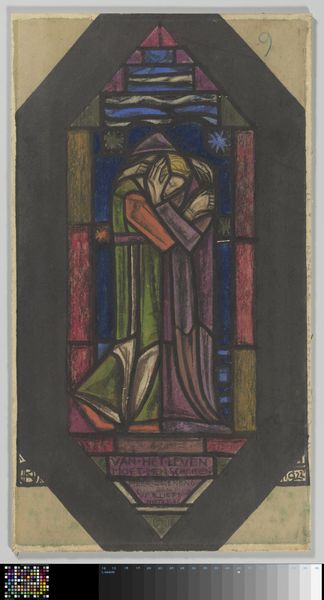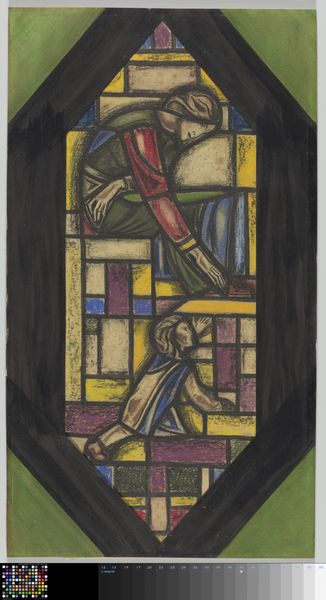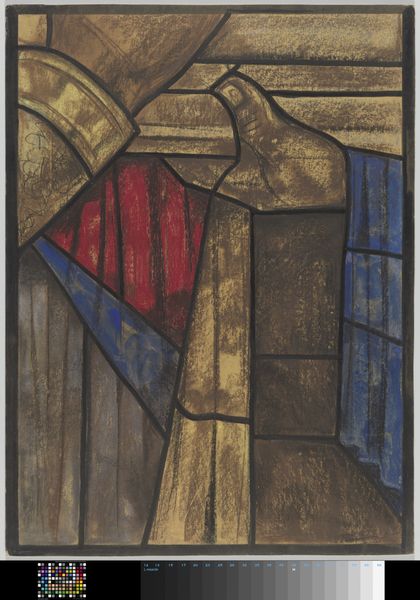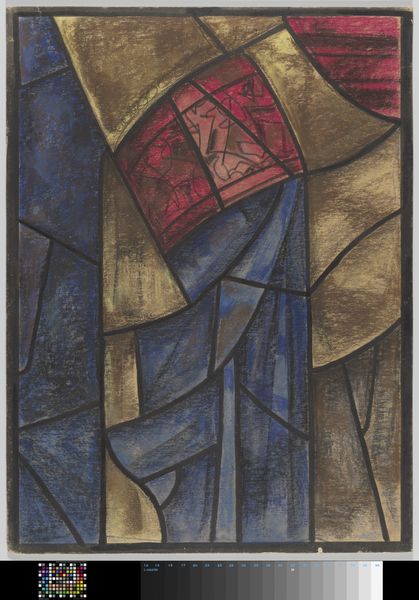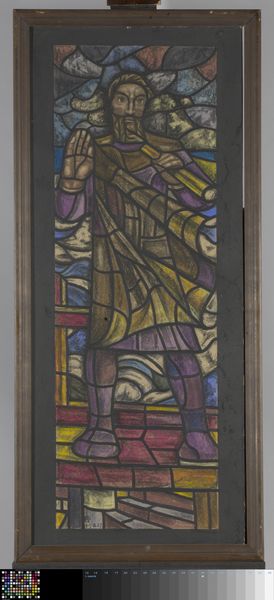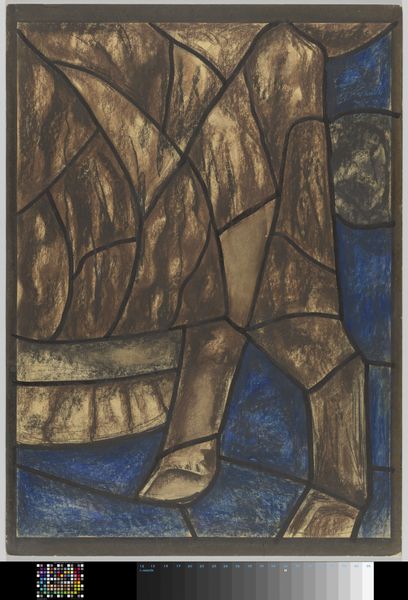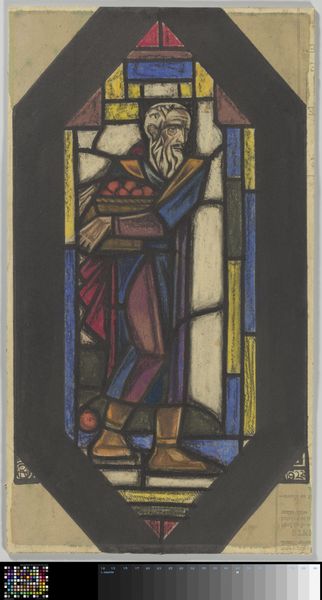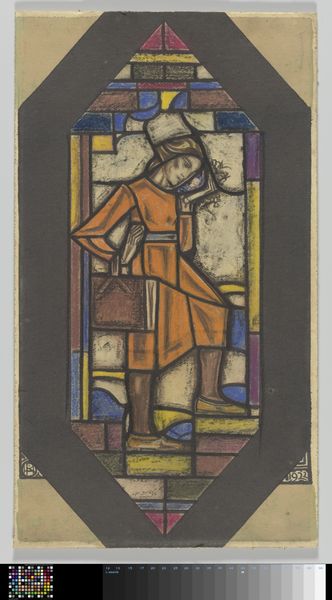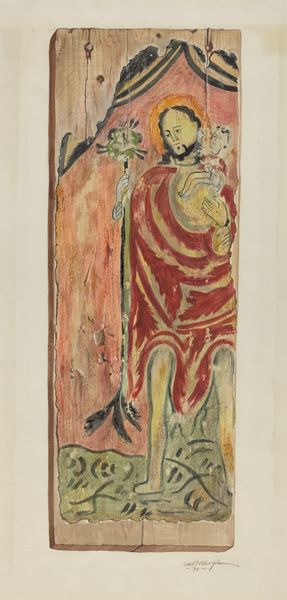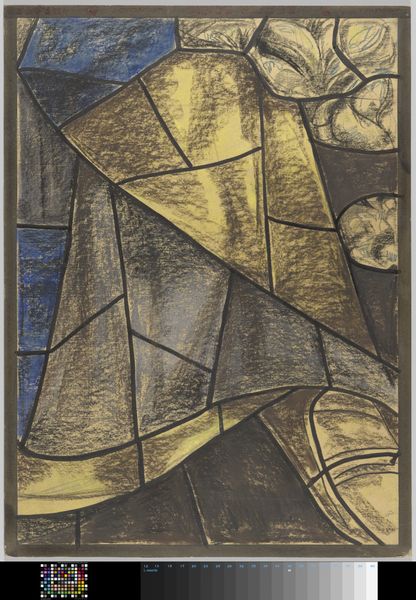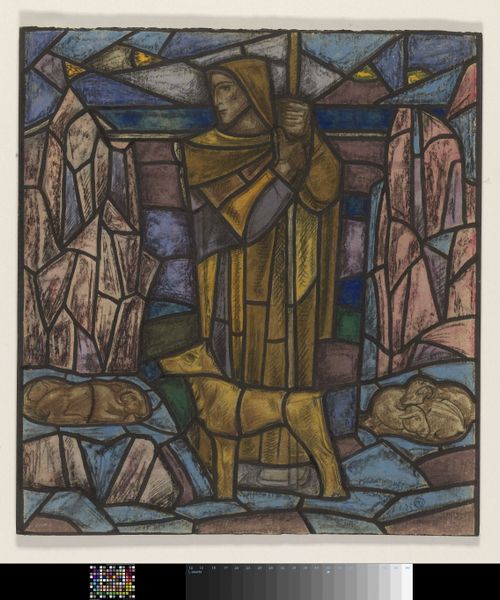
Ontwerp voor raam in het Nederlands Paviljoen op de tentoonstelling Arts Décoratifs te Parijs, 1925 1925
0:00
0:00
Dimensions: height 560 mm, width 280 mm
Copyright: Rijks Museum: Open Domain
Curator: It’s funny, I’m instantly drawn into the almost pained, upward gaze of the figure in this design. He’s surrounded by these shard-like blues that feel both celestial and somehow trapped. Does it strike you that way? Editor: What you're seeing there, I think, is a potent example of early 20th-century Dutch symbolism meeting Art Deco, conceived by Richard Nicolaüs Roland Holst around 1925. The piece, entitled "Ontwerp voor raam in het Nederlands Paviljoen op de tentoonstelling Arts Décoratifs te Parijs," was meant as a stained glass window design for the Dutch Pavilion at the Paris Exposition des Arts Décoratifs. It's held at the Rijksmuseum. Curator: Stained glass, really? I get more of a mural vibe. Either way, that elongated, almost theatrical posture certainly leans into the Symbolist tradition, right? That yearning… it's palpable. All those gem-like colors—the purple, green, gold against the indigo—really intensify that mood, as if they're magnifying his spiritual yearning. Editor: Holst was deeply invested in Symbolism, but here, the geometry and the very *idea* of mass production for an international fair mark a real embrace of modernity and Art Deco aesthetics. The pavilion itself aimed to showcase Dutch creativity in the context of global industrial design, so Holst’s window design contributed to a narrative of national artistic identity ready for a world stage. Curator: So it's less about pure spirituality, more about…presenting an image of national identity to the outside world. Editor: Exactly. Remember the fraught national climate after World War One and the growing Dutch socialist movement which heavily informed the themes in Holst’s body of work. Holst was walking the line between individual spiritual expression and collective identity. It's an image about the nation and its history as much as a singular spiritual reckoning. The figure's contemplative pose embodies Dutch intellectualism itself! Curator: Ah, right, right, the Dutch Pavilion… it reframes everything. That explains why that “yearning” feels so staged. Now when I look at him, I feel like *I'm* part of his audience. It changes the entire energy of the piece. I was feeling so sympathetic earlier…now I think the mood might be more propagandistic than melancholic. Fascinating! Editor: Indeed, a perfect illustration of how art exists both as a reflection of personal vision and as a tool in larger cultural and political narratives. The historical conditions help to unpack it all. Curator: Exactly. That really brings everything into, ahem, sharper focus. I like him much more now, strangely. Editor: The joys of revisiting and reinterpreting! It challenges us to think about the relationship between the individual, artistic expression, and socio-political influence.
Comments
No comments
Be the first to comment and join the conversation on the ultimate creative platform.

